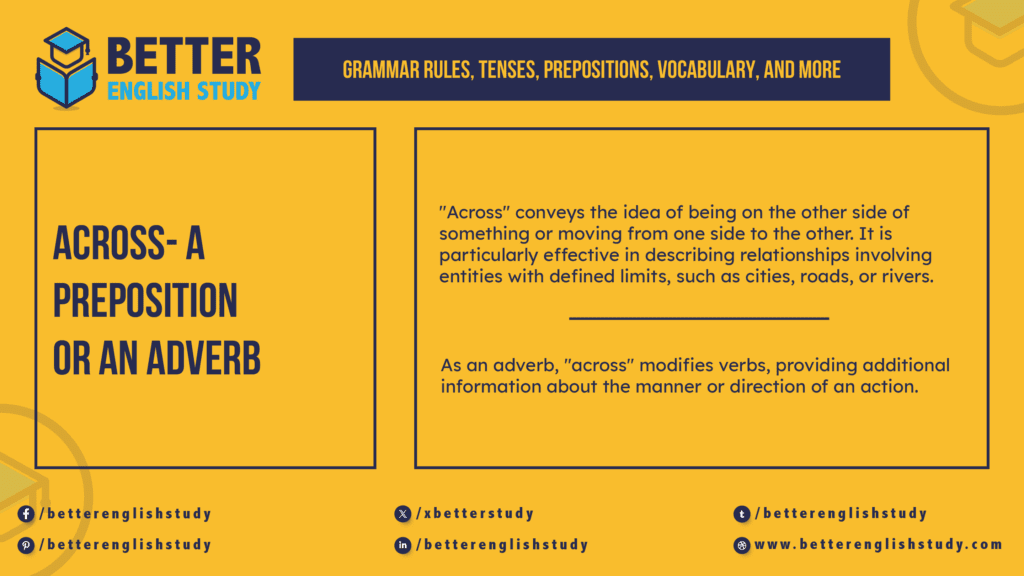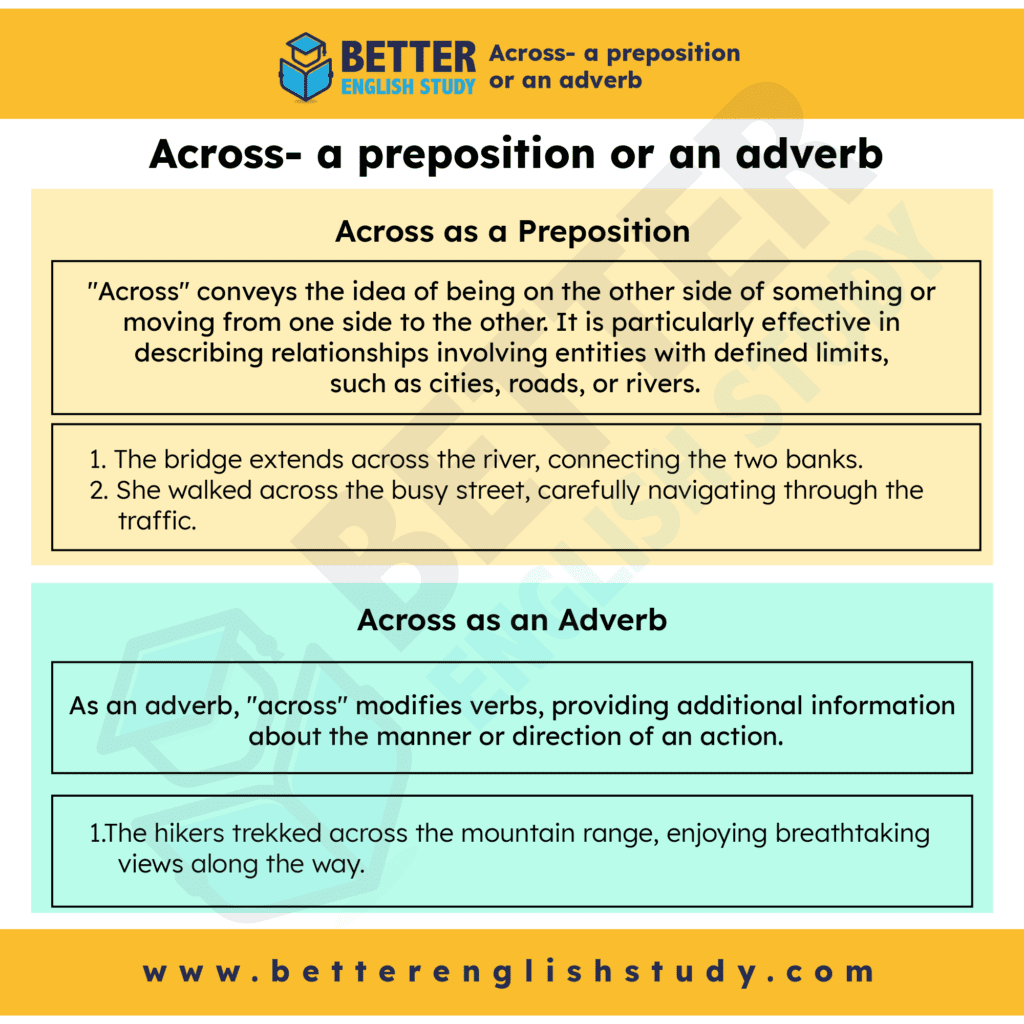
In the rich tapestry of the English language, certain words seamlessly straddle different grammatical roles, guiding us through the nuanced landscapes of expression. “Across” is one such word that sparks curiosity about its grammatical identity.
In this exploration, we will delve into the depths of “across” to discern its roles as both a preposition and an adverb.
Is Across a Preposition?
Yes, “across” is a versatile word that serves dual roles as both a preposition and an adverb. Its ability to convey spatial relationships and depict movement makes it an essential component of effective communication.
Across as a Preposition
When used as a preposition, “across” conveys the idea of being on the other side of something or moving from one side to the other. It is particularly effective in describing relationships involving entities with defined limits, such as cities, roads, or rivers.
Examples as a Preposition:
- The bridge extends across the river, connecting the two banks.
- She walked across the busy street, carefully navigating through the traffic.
In these instances, “across” serves as a preposition, indicating the relationship between the entities on either side of the river or street.
Across as an Adverb
In its role as an adverb, “across” modifies verbs, providing additional information about the manner or direction of an action.
Example as an Adverb:
- The hikers trekked across the mountain range, enjoying breathtaking views along the way.
Here, “across” modifies the verb “trekked,” offering insights into the direction of the hikers’ journey.
Defining Across’s Spatial Relationships
The essence of “across” lies in its ability to define spatial relationships, creating a vivid picture of movement or position from one side to another.
Example Defining Spatial Relationship:
- The town is located across the valley, nestled at the foot of the mountains.
In this instance, “across the valley” signifies the town’s position in relation to the geographical features, emphasizing its location on the other side.

In conclusion, “across” emerges as a versatile word that effortlessly transitions between the roles of preposition and adverb. Whether guiding us through spatial relationships or describing the manner of movement, “across” adds layers to our expressions.
So, the next time you find yourself using this word, appreciate its ability to seamlessly convey the sense of being on the other side or traversing from one point to another, enriching the tapestry of our language with its spatial nuances.
